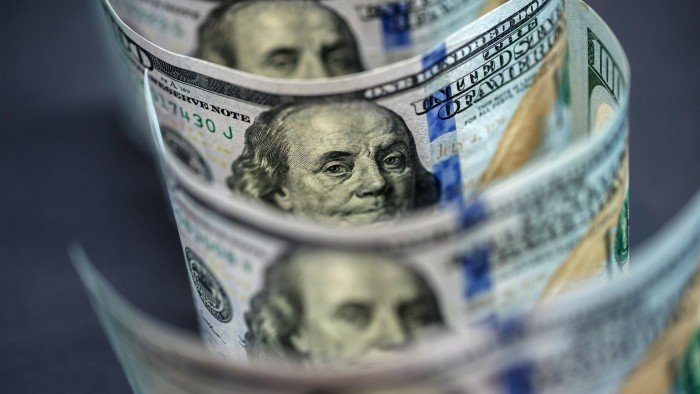Sign up for the White House Watch newsletter at no cost
Your resource for understanding what Trump’s second term means for Washington, businesses, and global affairs
Recent trade threats from Donald Trump have led to a significant drop in the dollar, marking its lowest point in three years on Thursday. Concerns about trade and geopolitical issues have intensified the pressure on the currency.
The dollar’s value decreased when the US president announced to reporters that he would soon send letters to trade partners specifying new tariff rates; this comes as the 90-day pause on so-called “reciprocal” tariffs is set to conclude next month.
The greenback slid by as much as 1 percent against several trading partners, including the pound and the euro. This decline has pushed the currency below its previous low from Trump’s aggressive tariff announcements in early April, reaching its weakest state since March 2022. By late afternoon in London, it was down 0.7 percent.
“[Trump’s] statement clearly indicates a renewed escalation in trade tensions as the deadline approaches,” commented Derek Halpenny, an analyst at MUFG.
Market participants were also considering a recent trade agreement between the US and China that was announced on Wednesday, along with rising tensions involving the US, Israel, and Iran. The Trump administration has authorized military personnel’s dependents to evacuate from the Middle East.
“We’ll see what unfolds,” Trump mentioned to reporters, adding, “They [Iran] cannot possess a nuclear weapon, that’s straightforward.”

Even though trade tensions are affecting the dollar, stock markets have rebounded from their drop in April. Recently, the S&P 500 index has approached a new all-time high.
Following initial losses, Wall Street stocks bounced back, with the S&P 500 gaining 0.2 percent. European stocks also reduced losses, with the Stoxx Europe 600 closing down 0.3 percent.
Analysts from Deutsche Bank noted that part of Thursday’s dollar movement could be linked to the Financial Times report about the US Pentagon reassessing its 2021 submarine agreement with the UK and Australia.
“The news regarding the US reconsidering its role in the Aukus defense pact is notably relevant for the dollar,” wrote George Saravelos, head of FX research.
“A weakened geopolitical stance between the US and its allies diminishes American investment inflows,” he added, mentioning that Australian investors voiced concerns during Thursday’s morning meetings.
Additionally, lower-than-anticipated inflation data from the US over the past days has further pressured the dollar, paving the way for potential interest rate cuts by the Federal Reserve. Futures markets are completely pricing in two quarter-point reductions from the Fed this year.
Conversely, indications from the European Central Bank last week suggested it might be nearing the end of its rate reduction phase, causing the euro to rise. It increased by 0.8 percent to $1.158 against the dollar, reaching its highest level since October 2021 during the session.
This decline in the dollar has led to a nearly 10 percent drop this year, driven by economic anxieties related to the trade war, worries about a growing budget deficit, and signals that some investors are scaling back their investments in US assets. An upcoming tax provision for foreign investments has also contributed to the uncertainty.
According to Vasileios Gkionakis, senior economist at Aviva Investors, the dollar’s weakness “has significant potential for further decline.” He remarked, “The move away from US exceptionalism is elevating the US risk premium and impacting the dollar’s value.”


